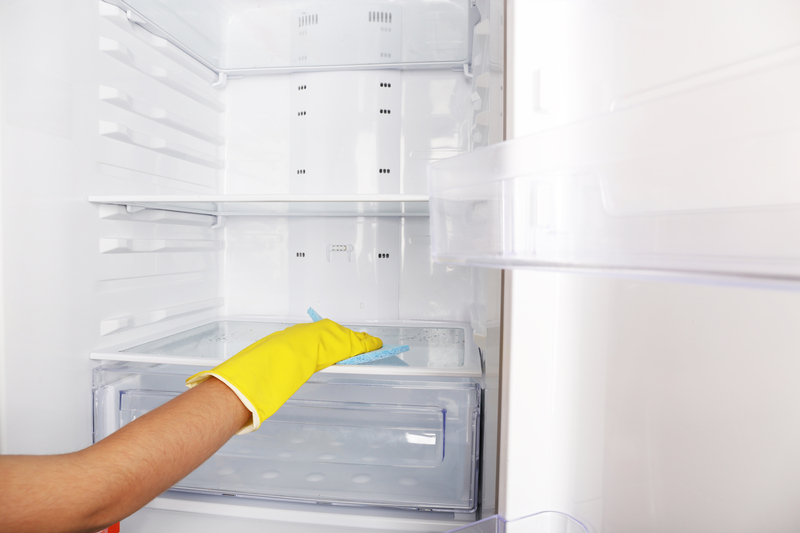Busting Cleaning Myths
Posted on 13/01/2025
Cleaning is a necessity in maintaining a healthy and comfortable living environment. However, with countless cleaning tips and tricks available from various sources, it's easy to fall for myths that may not actually benefit your routine. This article will delve into common cleaning misconceptions, providing clarity and helping you make informed decisions for a more effective clean.
The Myth of Vinegar as a Universal Cleaner
Vinegar is often touted as an all-purpose cleaning solution due to its versatility and natural properties. While it is true that vinegar can be effective in some cleaning scenarios, it's important to recognize its limitations. Vinegar is an acidic substance that can break down grime, but it can also damage certain surfaces.
For example, using vinegar on stone surfaces like granite or marble can lead to etching and dullness. Additionally, vinegar is not effective in killing certain types of bacteria and viruses. Always ensure that you are using the right product for the right surface and consider alternative disinfectants when dealing with harmful pathogens.

Bleach: The Cure-All Misconception
Bleach is another common cleaning agent surrounded by myths. Many people believe that bleach is the ultimate solution for killing germs and achieving a spotless home. While bleach is a powerful disinfectant, it's not a cure-all. Bleach can effectively kill bacteria and viruses, but it does not clean dirt and grime. It is also harsh on certain surfaces and materials, potentially leading to discoloration and damage.
Moreover, bleach fumes can be harmful when inhaled, particularly for those with respiratory issues. When using bleach, it's important to ventilate the area adequately and use it sparingly, as overuse can contribute to environmental pollution and health problems.
More Soap Equals a Better Clean
There is a common misconception that using more soap or detergent results in a cleaner surface or item. However, the effectiveness of soap depends on its proper use rather than its quantity. Using too much soap can lead to residue buildup, which can attract more dirt and bacteria, defeating the purpose of cleaning.
It is important to follow the manufacturer's recommendations for the correct amount of soap or detergent to use. This ensures effective cleaning while preventing residue and helping extend the life of your cleaning appliances, such as washing machines and dishwashers.
Disinfecting vs. Cleaning: Knowing the Difference
The terms "cleaning" and "disinfecting" are often used interchangeably, but they refer to different processes. Cleaning involves removing dirt, grime, and impurities from surfaces, while disinfecting involves killing germs and pathogens. A surface may look clean but still harbor harmful bacteria and viruses.
To maintain a truly safe environment, it's important to first clean surfaces to remove any visible dirt and debris and then use an appropriate disinfectant to kill any remaining germs. Understanding the distinction ensures a more comprehensive approach to maintaining hygiene.
The Myth of Newspaper as a Superior Window Cleaner
Using newspapers to clean windows and mirrors is a time-honored tip passed down through generations. While newspapers used to be effective due to their high paper fiber content and the absence of wax coatings, modern newspapers are not as effective.
Contemporary newspapers are often coated with waxes and dyes, which can leave streaks and residues on glass surfaces. A microfiber cloth is a much better alternative, as it effectively traps dust and does not leave any lint or residue.
Natural Cleaners are Always Safe and Effective
Natural and eco-friendly cleaning products are gaining popularity due to their perceived safety and environmental benefits. However, it's essential to scrutinize their claims just as you would with traditional cleaning products. Not all natural cleaners are effective against all types of dirt and pathogens.
Additionally, some natural ingredients, like certain essential oils, can trigger allergies or reactions in sensitive individuals. Always read labels, understand the active ingredients, and test products in small areas to ensure they are suitable for your needs.
Air Fresheners Clean the Air
Air fresheners are often used to mask unpleasant odors, leading to the misconception that they clean the air. In reality, most air fresheners simply mask odors rather than eliminate the source. They contain various chemicals that can contribute to indoor air pollution.
To truly improve air quality, it's better to identify and eliminate the source of the odor. Regularly cleaning carpets, upholstery, and air vents can help, as can using air purifiers and ensuring proper ventilation in your home.
Cleaning Carpets: Steam Cleaning vs. Dry Cleaning
The debate between steam cleaning and dry cleaning carpets has led to several myths. Some people believe steam cleaning can damage carpets or leave them wet for too long, while others think dry cleaning is less effective.
In reality, both methods have their pros and cons. Steam cleaning, when done correctly, penetrates deep into carpet fibers to remove dirt and allergens, and modern equipment is designed to minimize drying time. Dry cleaning, on the other hand, uses less moisture, making it suitable for delicate fabrics or areas that cannot be left damp. Choosing the right method depends on your specific needs and the type of carpet you have.
The More You Clean, the Less You Sanitize
Another myth is that over-cleaning can reduce the effectiveness of sanitizing efforts. This belief stems from the idea that frequent cleaning removes beneficial bacteria and could contribute to resistance. While it's true that unnecessary use of antibacterial products can contribute to resistance, regular cleaning is essential for maintaining hygiene.
It's important to balance everyday cleaning with occasional deep cleaning and proper sanitizing. For instance, regularly cleaning high-touch surfaces like doorknobs and kitchen counters can prevent the spread of germs without over-relying on harsh chemicals.

Conclusion
Busting these common cleaning myths can help you develop a more effective and safe cleaning routine. Understanding the limitations and proper uses of various cleaning agents and techniques ensures that you are not wasting time and resources on ineffective methods. A well-informed approach to cleaning not only makes your tasks more manageable but also contributes to a healthier living environment.
Stay curious, continue questioning traditional advice, and always opt for products and practices backed by scientific evidence. By doing so, you can master the art of cleaning and maintain a home that is truly clean and safe for all occupants.
References
1. Centers for Disease Control and Prevention (CDC). (2020). Cleaning and Disinfecting Your Facility. Retrieved from [CDC Website](https://www.cdc.gov/)
2. Stone, J. (2022). Natural Cleaning Myths. The Journal of Home and Environment. Retrieved from [Journal Website](https://www.jhe.org/)
3. Green, L. (2021). The Science Behind Household Cleaning. Housekeeping Today. Retrieved from [Housekeeping Today](https://www.housekeepingtoday.com/)








